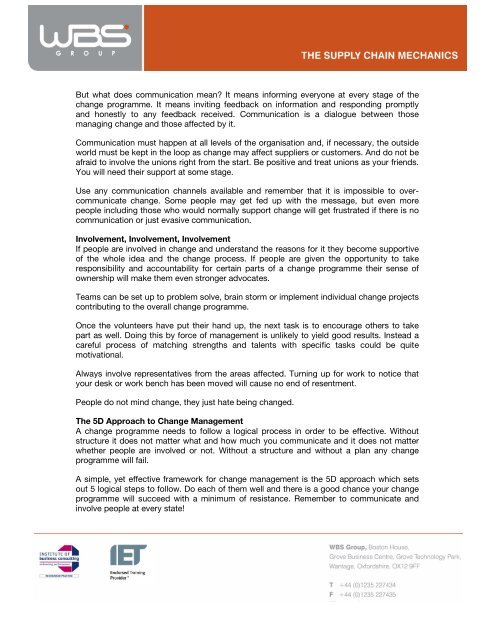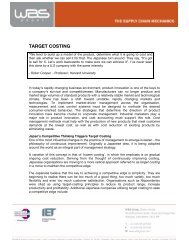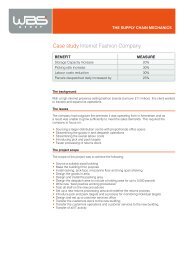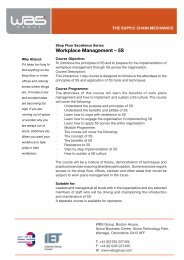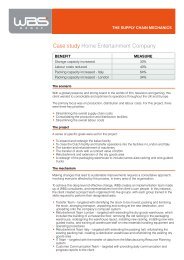Reducing Resistance to Change Resistance to Change - WBS Group
Reducing Resistance to Change Resistance to Change - WBS Group
Reducing Resistance to Change Resistance to Change - WBS Group
You also want an ePaper? Increase the reach of your titles
YUMPU automatically turns print PDFs into web optimized ePapers that Google loves.
But what does communication mean It means informing everyone at every stage of the<br />
change programme. It means inviting feedback on information and responding promptly<br />
and honestly <strong>to</strong> any feedback received. Communication is a dialogue between those<br />
managing change and those affected by it.<br />
Communication must happen at all levels of the organisation and, if necessary, the outside<br />
world must be kept in the loop as change may affect suppliers or cus<strong>to</strong>mers. And do not be<br />
afraid <strong>to</strong> involve the unions right from the start. Be positive and treat unions as your friends.<br />
You will need their support at some stage.<br />
Use any communication channels available and remember that it is impossible <strong>to</strong> over-<br />
communicate change. Some people may get fed up with the message, sage, but even more<br />
people including those who would normally support change will get frustrated if there is no<br />
communication or just evasive communication.<br />
Involvement, Involvement, Involvement<br />
If people are involved in change and understand the reasons for it they become supportive<br />
of the whole idea and the change process. If people are given the opportunity <strong>to</strong> take<br />
responsibility and accountability for certain parts of a change programme their sense of<br />
ownership will make them even stronger advocates.<br />
Teams can be set up <strong>to</strong> problem solve, brain s<strong>to</strong>rm or implement individual change projects<br />
contributing <strong>to</strong> the overall change programme.<br />
Once the volunteers have put their hand up, the next task is <strong>to</strong> encourage others <strong>to</strong> take<br />
part as well. Doing this by force of management is unlikely <strong>to</strong> yield good results. Instead a<br />
careful process of matching strengths and talents with specific tasks could be quite<br />
motivational.<br />
Always involve representatives from the areas affected. Turning up for work <strong>to</strong> notice that<br />
your desk or work bench has been moved will cause no end of resentment.<br />
People do not mind change, they just hate being changed.<br />
The 5D Approach <strong>to</strong> <strong>Change</strong> Management<br />
A change programme needs <strong>to</strong> follow a logical process in order <strong>to</strong> be effective. Without<br />
structure it does not matter what and how much you communicate and it does not matter<br />
whether people are involved or not. Without a structure and without a plan any change<br />
programme will fail.<br />
A simple, yet effective framework for change management is the 5D approach which sets<br />
out 5 logical steps <strong>to</strong> follow. Do each of them well and there is a good chance your change<br />
programme will succeed with a minimum of resistance. Remember <strong>to</strong> communicate and<br />
involve people at every state!


